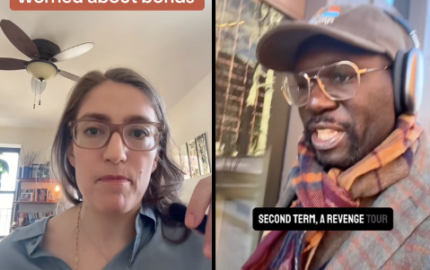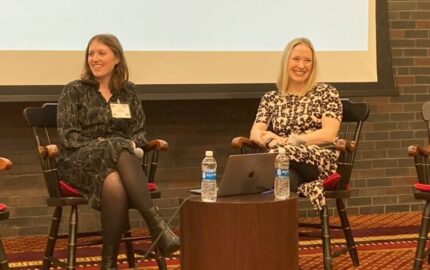 The discussion wasn't aimed at forming a consensus on the future of story. Instead, participants highlighted a number of narratives that made the most of new technologies or represented novel approaches.
The discussion wasn't aimed at forming a consensus on the future of story. Instead, participants highlighted a number of narratives that made the most of new technologies or represented novel approaches.We'll cover more of the roundtable in March, but for now, I'll highlight a few of the projects that were discussed.
"Thirst in the Mojave," from Zach Wise, ran in the Las Vegas Sun (Wise is now at The New York Times). At the top of the homepage, a panic-inducing counter runs off the remaining days until Lake Mead will (possibly) run dry--which is only one small part of a dazzling array of information available for visitors to the site. The video follows a traditional, linear approach, but additional elements supply context in unusual ways. To read an explanation of each feature, see this post at digitalartwork.net.
"Digital Nation," from Frontline, combines a documentary with a Web site. The site offers viewers a chance to share their own stories of digital encounters, to see longer interviews with experts and to participate in roundtables. According to director and producer Rachel Dretzin, one unforeseen consequence of creating a dedicated Web site for the project has been the difficulty of deciding how and whether to update it now that the documentary has aired.
"Law & Disorder," a collaboration among ProPublica, Frontline, and New Orleans' own Times-Picayune newspaper, is billed as "an online investigation into questionable shootings by the New Orleans Police Department in the wake of Katrina." Frontline Senior Producer Raney Aronson-Rath and Executive Producer David Fanning talked about the open-ended nature of this project, noting that they still haven't decided on the final form it will take. Transparency and ongoing rollout of new information make for particularly challenging storytelling when the focus is a series of shootings that could turn out to be murders.
Living Stories from Google Labs, the least narrative of the projects from the symposium, aggregates all the content on a site related to a particular story. A brief summary and a timeline cover the broad sweep of events to date. Google Senior Business Product Manager Josh Cohen distinguished a topic from a story, with a story representing evolving events. Since the Google source code is now available to people wanting to use it on their own Web sites, it's worth considering how Living Stories might incorporate more crafted storytelling approaches in the future.
Some of the most experimental and interactive projects had relatively small audiences, even those projects produced by established organizations. It remains to be seen whether viewers will be more hesitant to welcome new approaches from sources they associate with very specific kinds of storytelling, or if it's just a matter of experimenting with innovative storytelling until viewers and storytellers click.


